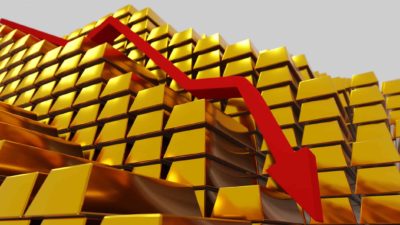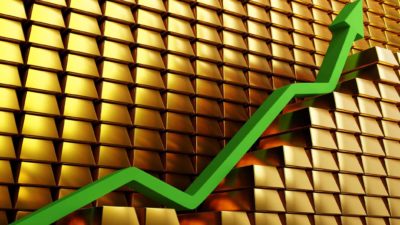ASX gold miners are in for another strong trading day after the gold price surged to a record high this morning even as some question its ability to break over US$2,000 an ounce.
The spot gold price jumped 0.5% to US$1,953 and is comfortably ahead of its previous peak of US$1,921 that it hit in September 2011.
The precious metal couldn't spend much time at those dizzying heights nine years ago and quickly tumbled. Is gold facing the same fateful outcome this time round?
Path of least resistance
No one can say for sure, but I think there are more reasons for gold to run higher than capitulate. This means the next stop for the safe haven commodity is US$2,000, as outlined back in April on the Motley Fool.
There are a few significant differences to gold's ascend this time compared to 2011 that makes me a bull.
For one, gold is peaking at the start of the COVID-19 crisis while it hit a crescendo two years after the GFC.
Fundamentals shining brighter
This means there are still more fundamental levers for gold to pull to extend its run in 2020. We can't quite say the same about the post-GFC era when the global economy was on the mend.
Sure, if we get the touted V-shape recovery from the COVID-19 fallout, gold's time in the sun could be short-lived. But even then, gold still can outperform into 2021 – and there are enough signs for us to question the probability of a V-shaped snapback.
Further, the era of record low interest rates and central bank/government stimulus isn't about to come to a close in the near-term either. If anything, these tailwinds for the gold price is likely to continue till at least 2022.
Currency tailwind just starting
The other significant difference in 2020 is the US dollar. As gold historically moves in opposite direction to the greenback, the outlook for the currency is important.
Back in 2011, the US dollar was struggling to emerge from a three-year crash. Remember a time when the Aussie was fetching well over US$1?
Gold's fortunes started to turn about the same time as the US dollar stabilised and started to climb. This time, the US dollar was trending higher and seems to have reached a peak.
The US Dollar Index (a measure of the greenback against a basket of key currencies) is currently trading at 93.7 after falling around 9% since March. Back in September 2011, the index was trading around 80 as it came out of a trough.
Socially-distanced crowded trade
The third difference is we have fewer gold bulls this time than the last. Back then, a few leading brokers and experts predicted gold is heading to around US$5,000 an ounce (or a target that's similarly outlandish).
I'm starting to see a few of these blue-sky forecasts creeping back into the media, but it's nowhere at the level as we witnessed in the aftermath of the GFC.
This is significant because nothing says "this is the end of a trend" like a crowded trade.








